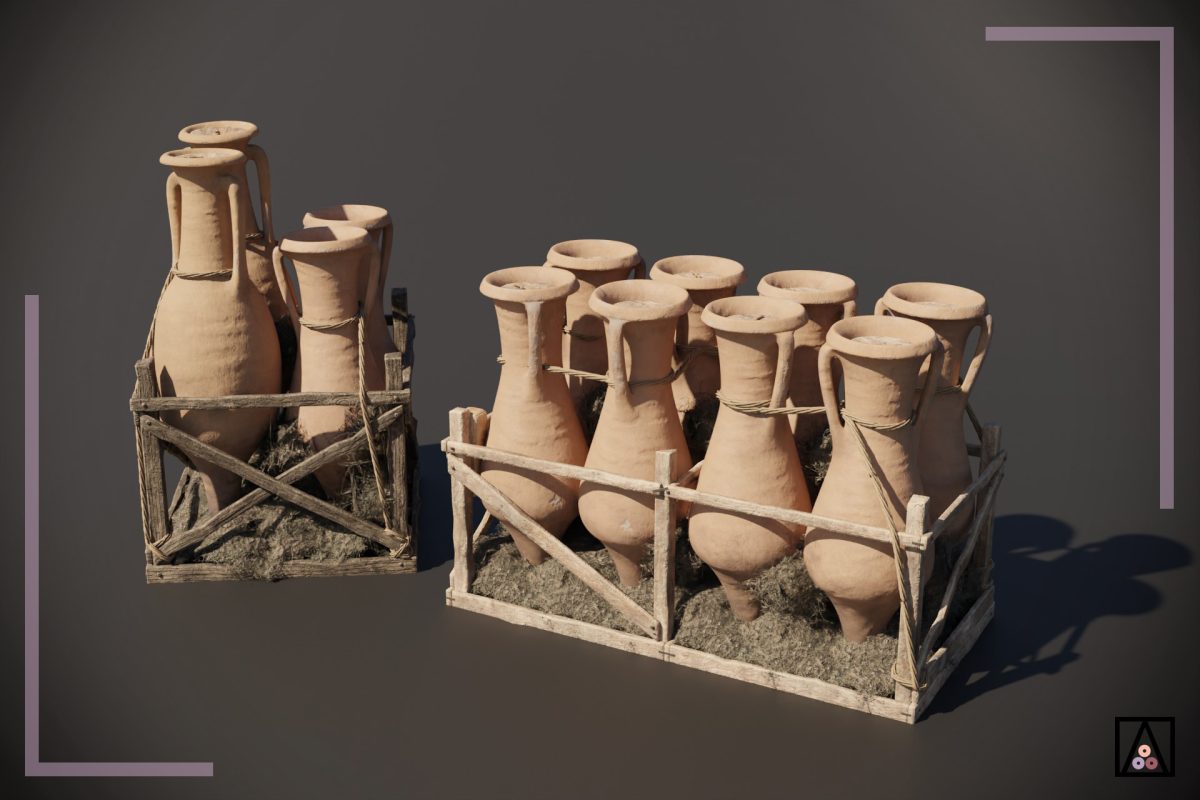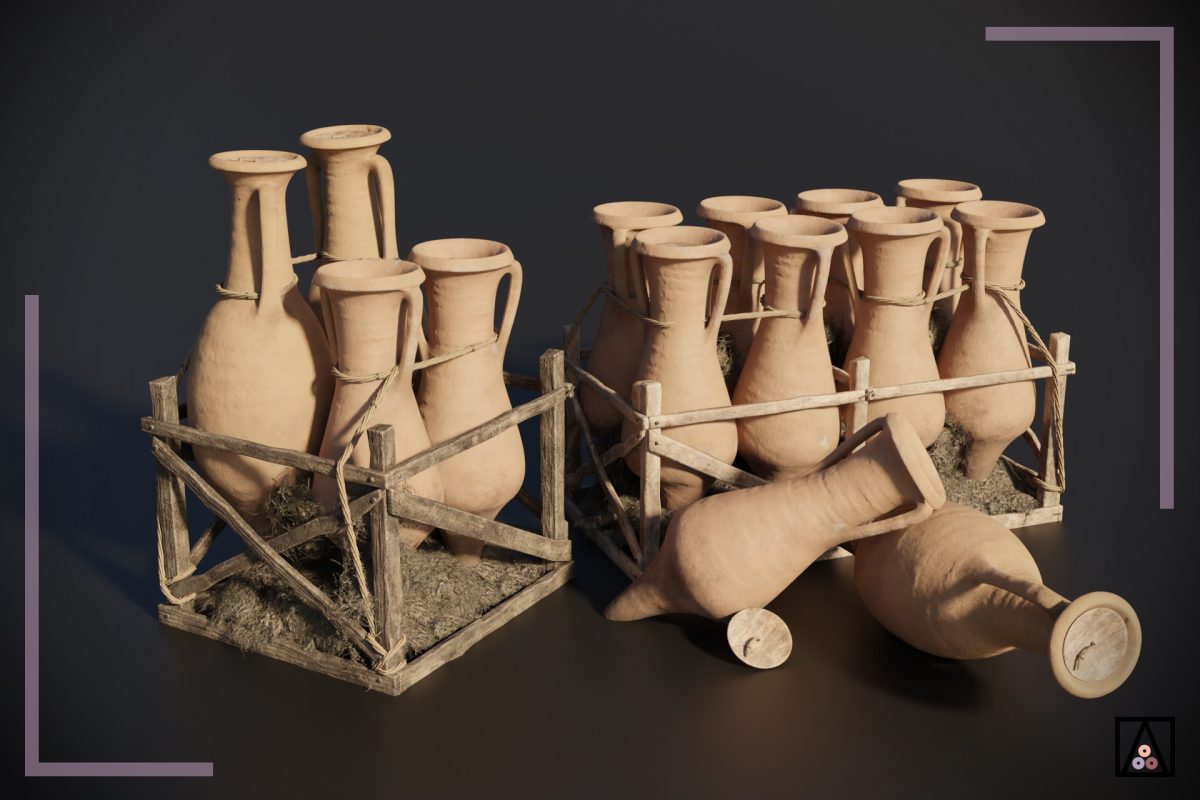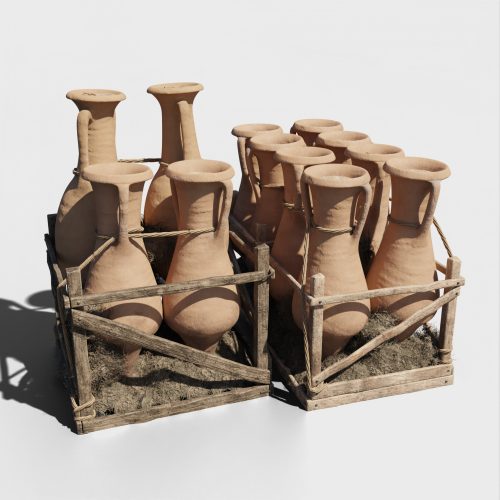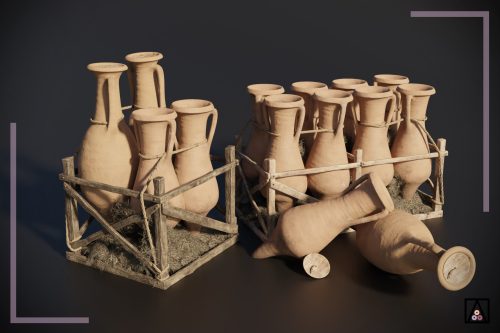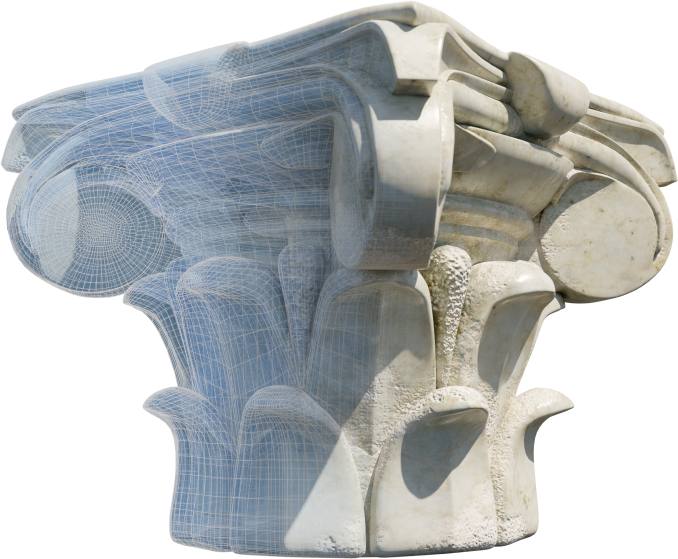Set of amphorae based on those found in the cargo of the wreck El Bou Ferrer, a merchant ship sunk off the coast of Vilajoiosa (Alicante, Spain).
Amphoras are large ceramic containers that were characterized by having two handles and a long narrow neck, the same as the base, for this reason, many of them used to be accompanied by a support when they were not buried in the ground. These very narrow feet facilitated stowage (adequate distribution of the merchandise on a ship), stacking the amphoras on several levels, which made it possible to make the most of the internal space of the ship. They were used as the main means of storing wine, oil, cereals, fish, grapes, olives, salted foods such as garum, etc., and could also be used as a burial for infants. Their production was so cheap that on many occasions they were not reused. There were many types of amphorae according to their shape: the most famous are the Dressel: with a long neck, straight handles and an ogival body that normally stored wine; the Lamboglia and Oberaden: they are oil amphorae, whose main content would be oil, characterized by its large rounded body, thick walls and short neck and handles. We also found amphoras that frequently contained garum or salted fish, which were characterized by being very long and narrow.
Caja 01
LOD0: 341K Poly / 680K Tris
LOD1: 141K Poly / 262K Tris
LOD2: 83K Poly / 164K Tris
LOD3: 69K Poly / 135K Tris
Caja 02
LOD0: 198K Poly / 396K Tris
LOD1: 138K Poly / 222K Tris
LOD2: 69K Poly / 131K Tris
LOD3: 54K Poly / 105K Tris
Game Ready Model
Formats: .FBX; .OBJ; .blend.
PBR materials (JPG/PNG)
Texture maps: Base Color, Normal Map, Metallic, Roughness, AO, Height.
Texture resolution: 1K, 2K and 4K.
Rigged: No
Animated: No
Mask for color alternatives: No
Pablo Aparicio RescoDesirée García Espinosa
BERNAL CASASOLA, D., (2019): "Ánforas romanas e hispanorromanas" Arqueología romana en la Península Ibérica. Editorial Universidad de Granada, Granada.
SÁNCHEZ BARRACHINA, M., (2013): "Ánforas romanas para el envasado de vino". El comercio y la cultura del mar. Alicante, Puerta del Mediterráneo.
Download the informative book about EL PECIO BOU FERRER in the following link

